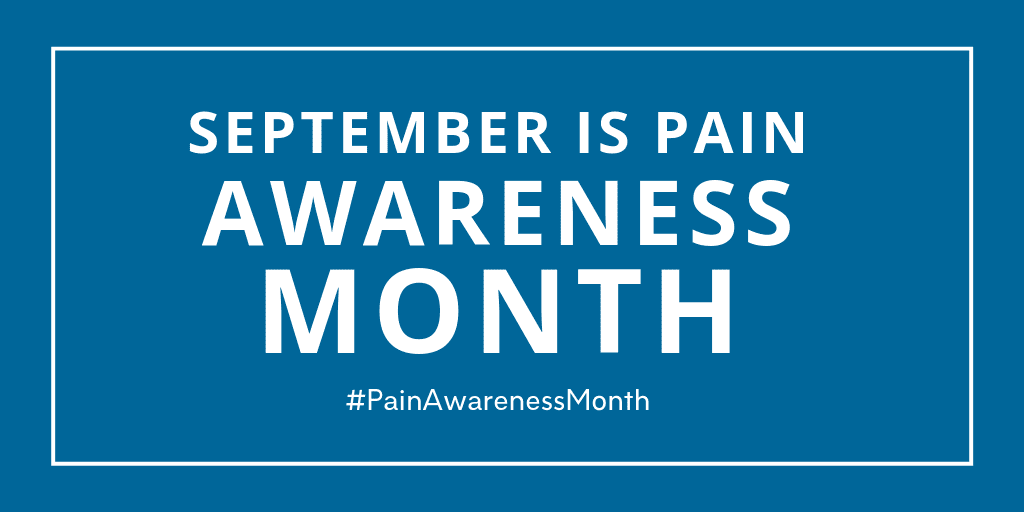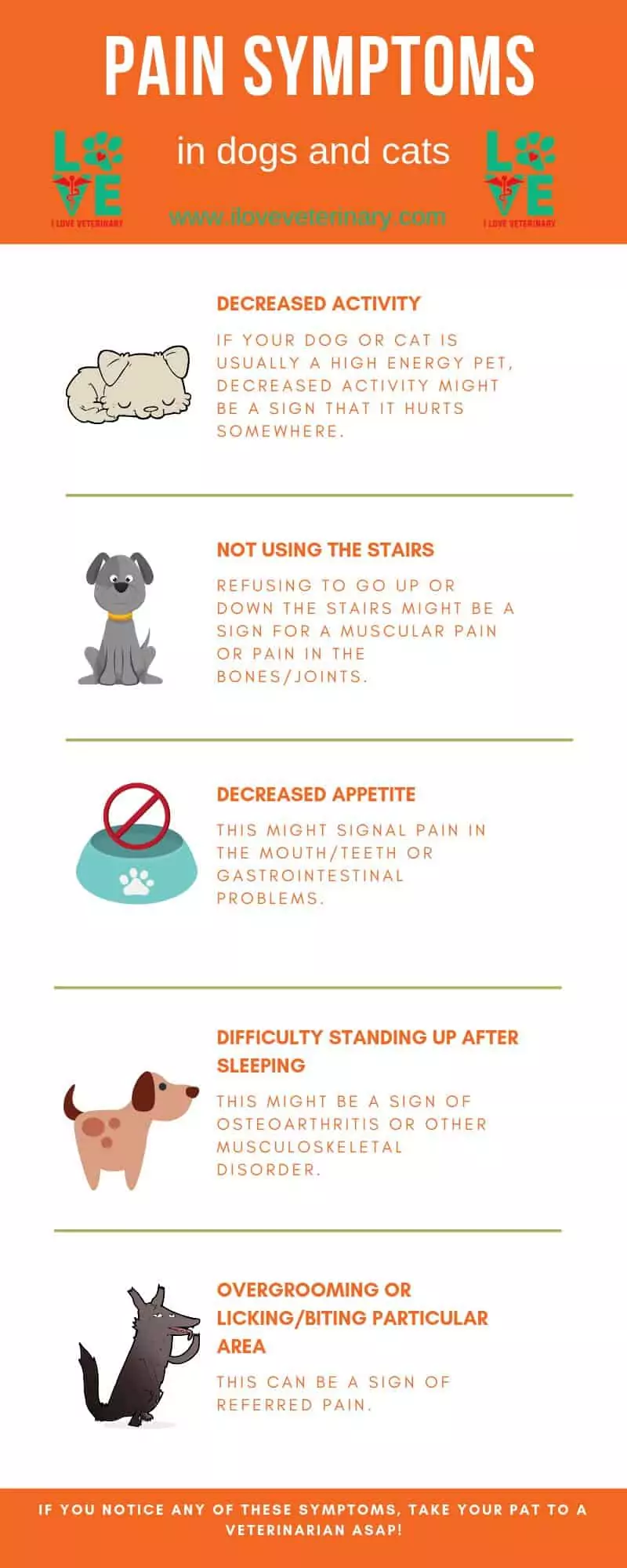It’s National Pain Awareness month and we decided to make an infographic about the pain symptoms in dogs and cats.

Our pets, no matter if it is a dog or a cat, can be masters in disguising the pain they feel. This is an instinct they kept from “the old days” when they had to hide their pain in order to survive. When animals live in packs, this instinct saves them from being chased away from the group or even eaten because they are weak and can slow them down.
Pets are Martyrs When it Comes to Hiding Pain
Real masters when it comes to pain are the cats. Cats can suffer silently and hide their pain symptoms very good. But at the same time, our pets are creatures of habit, and we as pet owners must be aware of all habits they have and notice if anything changes.
Some painful diseases or disorders are very obvious, like a car accident and an obvious fracture or an open wound. But other disorders might be more difficult to notice.
Our pets have some subtle ways to show that they are in pain and it is our job to notice these signs.
On the infographic below are listed the most common pain symptoms and what they might present. If your pet is experiencing pain or discomfort of any kind and showing one or more of these pain symptoms, take the pet to your veterinarian as soon as possible.

If you liked this infographic, read this infographic about “Interesting facts about dogs” on our blog.
Pain Symptoms in Dogs and Cats
Pain is the most common reason that pet owners seek veterinary care for their pets.
The pain can be felt by animals as an unpleasant sensory or emotional experience, with signals sent to the brain via nerve impulses. It may include acute pain (from sudden onset) which is sharp and well-defined, or chronic pain which progresses over a period of time typically starts slowly and worsens over time (non-cancer pain would fall into this category).
Common pain syndromes seen in veterinary practice include arthritis; dental disease; ear infections; fractures; gastrointestinal pain e.g.: appendicitis, gastroenteritis, etc.; musculoskeletal pain e.g.: sprains/strains, cruciate ligament injury; pain due to bladder stones or urethral plugs; pain secondary to lacerations; pain secondary to tumors (e.g.: oral cancer pain); pain related to urinary tract infections/urine retention, and post-operative pain.
The perception of pain is linked with many stereotypical behaviors including vocalization, aggression, depression, licking wounds, or flinching when touched.
Untreated pain can lead to worsening of quality of life since it interferes with normal behavior patterns such as eating and sleeping.
Prolonged pain may induce changes in the animal’s temperament. It can also increase morbidity by causing various pathologic responses and inhibiting normal function and behavior.
Pets may become depressed, reclusive, or aggressive. Reduction in pain through pain control is important to the animal’s ability to resume a normal life and reduce their pain-related disability.
Pain Management in Cats and Dogs
Pain management is part of the reactive phase of trauma care and chronic disease care which includes: pain assessment, pain mechanism review (e.g.: cancer pain), analgesic choice selection, drug delivery route/method (oral for systemic effect; injectable for rapid effect) dose rate determination (dose based on body weight and condition of the patient; use pain scales), and its effects on the animal if possible (interactive session between owner and vet).
The goal of pharmacologic management is to provide analgesia with minimal side effects, allowing pain to be controlled before the pain becomes severe.
When pain management is being considered, its impact on quality of life should be addressed through client-directed pain control efforts. The “three Ps” of pain treatment are often used to guide drug selection: perception, palliation, and production of adverse effects.
A multidimensional approach for pain assessment in dogs and cats uses pain intensity grades 1–5 (1 being mildest pain; 5 being the worst pain) with nausea/vomiting grading 1-3 (1 being no nausea or vomiting; 3 being strongest).
